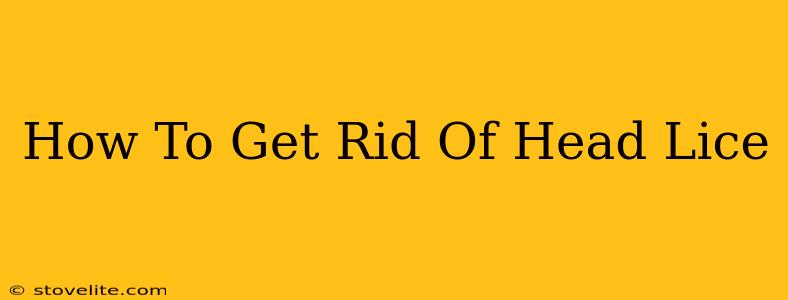Head lice. Just the thought of it can send shivers down your spine. These tiny parasites are incredibly common, affecting millions worldwide, and while not dangerous, they can be incredibly irritating and persistent. This comprehensive guide will walk you through everything you need to know about how to get rid of head lice effectively and safely.
Understanding Head Lice
Before we dive into treatment, it's crucial to understand what we're dealing with. Head lice are wingless insects that live and feed on human blood. They're highly contagious, spreading easily through close contact (head-to-head contact is the most common way). Contrary to popular belief, head lice are not a sign of poor hygiene. Anyone can get them.
Identifying Head Lice and Their Eggs (Nits)
Knowing what to look for is the first step in effective treatment. Look for:
- Live lice: Tiny, grayish-white insects that move quickly across the scalp.
- Nits: These are the lice eggs, small, white or light brown oval-shaped objects firmly attached to the hair shaft, particularly near the scalp. Unlike dandruff, nits are difficult to remove.
Effective Head Lice Treatment Methods
There are several effective ways to get rid of head lice. The key is consistency and thoroughness:
1. Over-the-Counter (OTC) Lice Treatments
Many effective OTC lice shampoos and lotions are available. These usually contain permethrin or pyrethrin, insecticides that kill lice. Always follow the instructions carefully. This includes:
- Applying the treatment: Ensure complete coverage of the hair and scalp.
- Waiting time: Allow the treatment to remain on the hair for the specified time.
- Rinsing thoroughly: Completely remove all traces of the product.
- Repeating the treatment: Most products require a second application after a week to kill any newly hatched lice.
2. Wet Combing
This is a crucial step, regardless of whether you use OTC treatments. Wet combing involves using a fine-toothed comb to physically remove lice and nits from the hair. This is especially effective for removing nits.
- Wet the hair: Thoroughly wet the hair with conditioner. The conditioner helps the comb glide through the hair easily and makes it easier to remove the lice and nits.
- Comb methodically: Work your way through the hair, section by section, starting from the scalp and combing down to the ends. Rinse the comb frequently.
- Patience is Key: This process can be time-consuming, but it is vital for complete removal.
3. Home Remedies
While OTC treatments are generally the most effective, some home remedies are sometimes suggested. However, scientific evidence supporting their effectiveness is limited. It's crucial to consult a healthcare professional before trying any home remedies, especially if you have children or other health concerns.
Preventing Head Lice Reinfections
Once you've successfully treated head lice, preventing reinfection is crucial:
- Check Regularly: Regularly check your hair and the hair of family members for lice and nits.
- Avoid Head-to-Head Contact: Encourage children to avoid close head-to-head contact with other children.
- Clean Bedding and Clothing: Wash bedding, clothing, and other items that may have come into contact with the infested person in hot water and dry them on high heat.
- Vacuum Frequently: Vacuum carpets and furniture regularly to remove any stray lice or nits.
When to See a Doctor
While head lice are not dangerous, it's important to seek professional medical advice if:
- Treatment is ineffective: If OTC treatments and wet combing fail to eliminate the lice, consult a doctor.
- Severe itching or irritation: If you experience intense itching or skin irritation, consult a doctor to rule out any secondary infections.
- Signs of allergic reaction: If you experience any allergic reaction to lice treatment, seek immediate medical attention.
Getting rid of head lice can be challenging, but with a combination of effective treatments and preventative measures, you can successfully eliminate these pesky parasites and prevent future infestations. Remember, early detection and consistent treatment are key.

